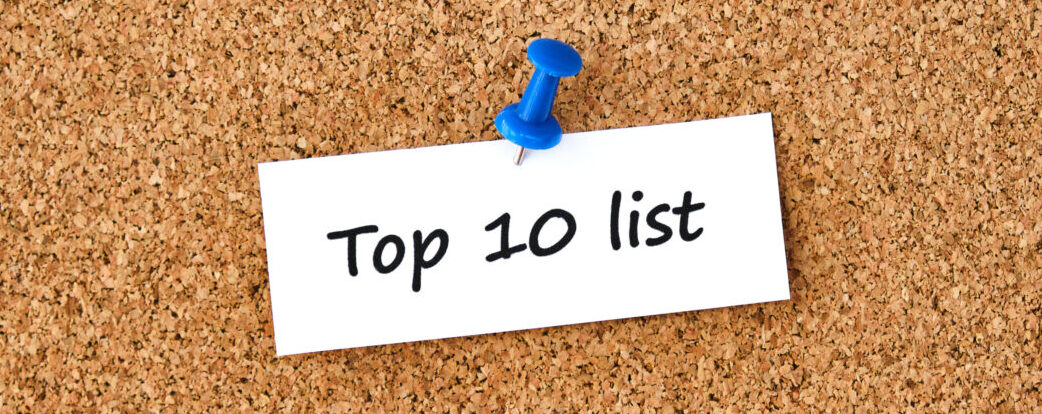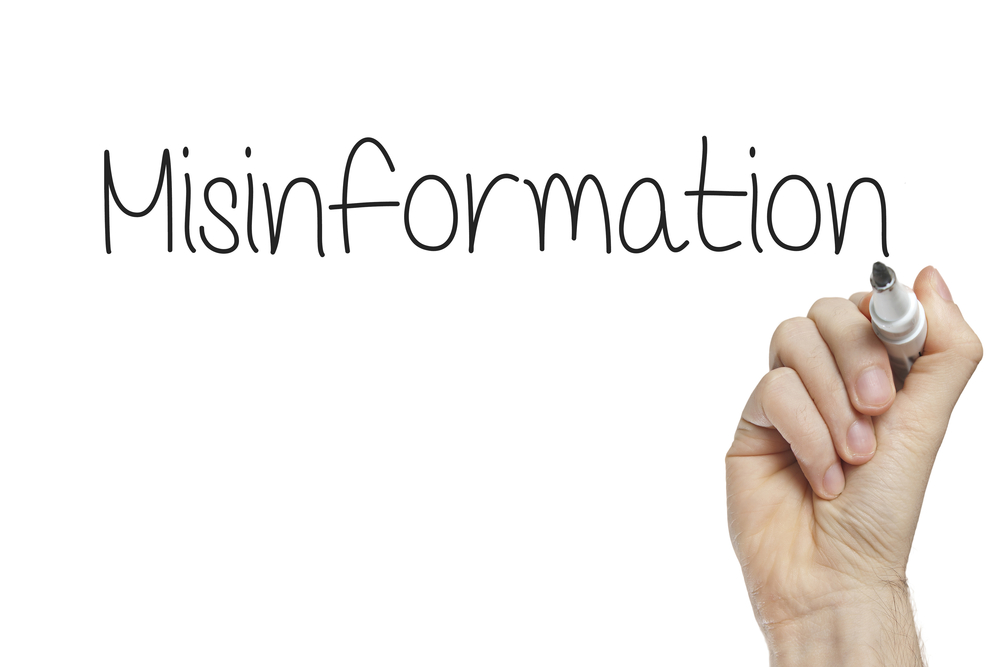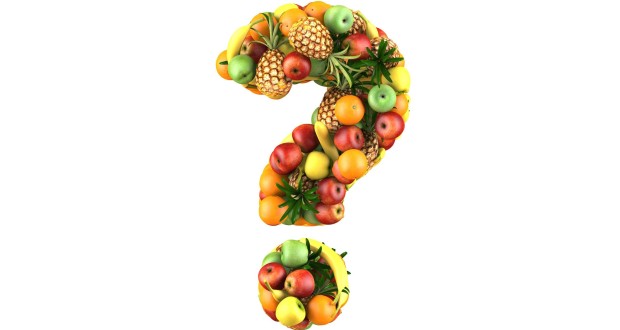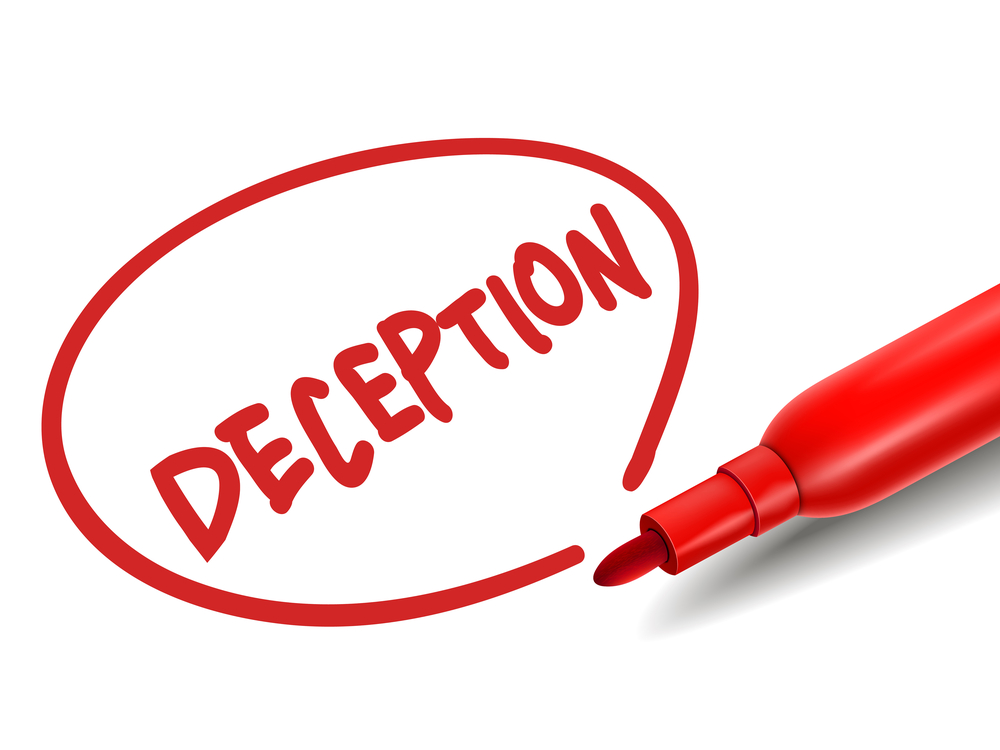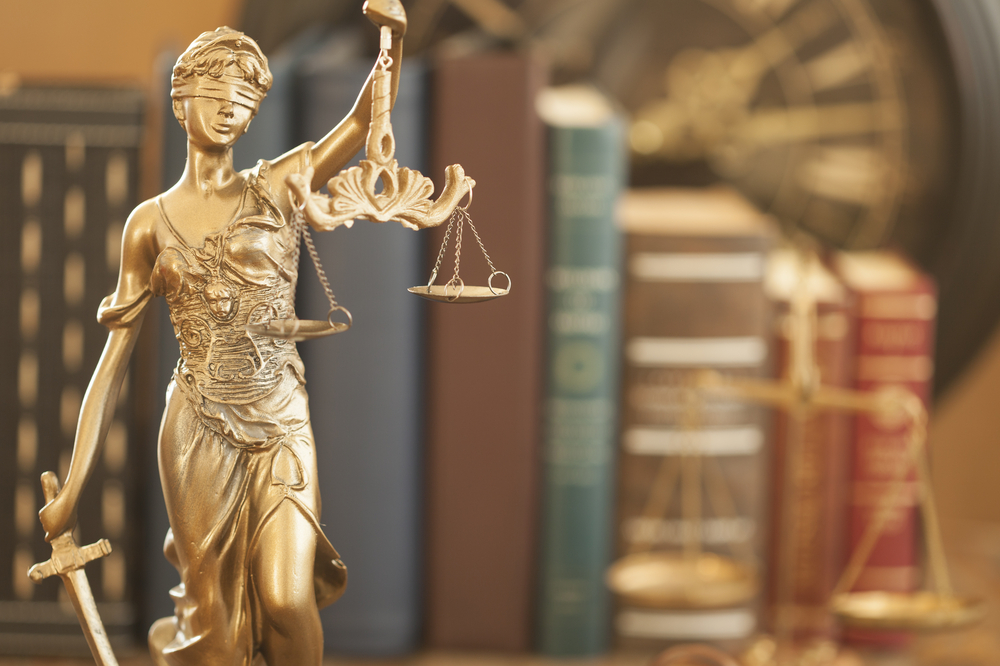All posts by NFI Media
Mercury In Tuna Study Needs Some Perspective
There are a number of new reports out about a study on mercury in tuna that are in desperate need of some accurate, scientific perspective. Headlines about the new study say things like; “Mercury Levels Rising In Popular Types Of Tuna.” And indeed that’s what the study purports to find. But, and yes reporters there is a “but,” the levels the study finds are not even close to concerning for public health.
By The Numbers
The study reports, for instance, that changes in mercury concentration in yellowfin tuna include an increase of as much as 5.5%. At the very most, that would put these levels at a concentration of 0.356 ppm. The FDA’s limit for mercury in seafood is 1.0 ppm. And that limit has a tenfold safety factor built-in. That means the lowest level associated with adverse effects is 10.0ppm. The study also notes that 0 of 288 yellowfin tuna samples exceeded this 1.0ppm value.
Big Rise?
Therefore the “big rise” in mercury levels brings yellowfin to 0.356 ppm. Regulators begin to take note if levels consistently reach 10.0ppm… clearly 0.356 is a far cry from 10.0. This is the actual, applicable perspective that is not present in any of the reporting we have seen.
Just The Facts Please
If reporters are going to report on this they need to report the whole story.
Salmon: Correcting the Record
It wasn’t that long ago Dr. Sanjay Gupta told audiences that farmed salmon was “injected” with dye. He later devoted an extraordinary amount of time and research into an expose for 60 Minutes about farmed salmon where he explained that the dyed salmon narrative was simply a myth that needed rebutting:
- Some people use that as a point to criticize farmed salmon that there are these artificial dyes—“It’s not accurate to call these artificial dyes. I think people conjure up this image of the farm salmon being injected with something that causes it to turn that pink color. That’s not what’s happening here. It’s a much more natural occurring process where the farmed salmon eat a type of food that causes a reaction in the body, just like the wild salmon does, and that causes that more pinkish color.”
While we take our hats off to Dr. Gupta for correcting the record and doing it in a science-based manner, we also have to say good job to Cooks Illustrated. The venerable cooking magazine made the very same mistake Gupta once did but has done a service to its readers by also correcting the record:
- In our March-April 2017 issue, we state that farmed salmon is “dyed pale pink by synthetic astaxanthin and carotenoid pigment in [the] feed.” To be clear, farmed salmon is not dyed. The pinkish color of the flesh is created by compounds in the feed. A similar process occurs in wild salmon, which get their pink color from eating shrimp and other sea creatures rich in carotenoids.
Getting accurate information out about the food we all eat is important. Misinformation, especially about healthy food like salmon, can actually hurt public health. Whether its chefs or doctors who are helping to set the record straight they should be applauded.
Wall Street Journal Highlights Seafood In Border Adjustment Tax Article
Fish Importer Casts Worry Over Border-Adjusted Tax
Companies that rely on raw materials not easily replicated at home could be hard-hit
By Richard Rubin and Heather Haddon
Feb. 28, 2017
BENSENVILLE, Ill.—Sean O’Scannlain will spend more than $100 million this year—about half his company’s revenue—importing fish, ham, chocolate, cheese and other foods from 57 nations.
The fish, including 65,000 pounds of farmed salmon each week from the remote Faeroe Islands and countries such as Canada, Norway and Chile, arrives fresh. His 330 employees cut it, package it and send it to hotels, restaurants, Whole Foods Market Inc. stores and other retail shops in the Midwest. So when the president and chief executive of Fortune Fish & Gourmet heard Congress was considering a tax plan that wouldn’t let him deduct the cost of those goods, he didn’t believe it at first.
“It’s crazy, absolutely crazy,” Mr. O’Scannlain said on a recent afternoon in his headquarters near Chicago O’Hare International Airport, as workers sliced open whole fish, packed oysters and stocked shelves with Spanish olives, cheese and ham. “Politically, it is a bad idea for Congress to have to defend increasing the average consumer’s food costs by a couple thousand dollars a year.”
Food businesses like Mr. O’Scannlain’s that rely on raw materials are among those most exposed to the border-adjustment provision that is a key plank in the House Republicans’ tax plan. They warn that border adjustment—taxing imports and exempting exports, as part of a plan to encourage companies to locate jobs and production in the U.S.—could force them to raise prices.
In Mr. O’Scannlain’s case, that would mean the $8.95 that his company charges restaurants and other retail customers for a salmon filet could go up to $11.25, contributing to a loss of revenue by roughly $50 million as higher menu prices weigh on sales.
U.S. waters don’t produce enough fish to satisfy domestic demand, and imported seafood makes up more than 80% of domestic consumption, according to the National Oceanic and Atmospheric Administration. Mr. O’Scannlain says creating a domestic fish-farming industry would take years and major regulatory changes.
Coffee, tea, spices, chocolate and bananas also can’t be produced in commercially viable quantities at home.
These food businesses, along with big-box retailers and oil refiners, have helped put the border-adjustment provision in political peril in Congress. House leaders back border adjustment, which would raise $1 trillion over a decade to pay for cutting the corporate-tax rate and to prevent companies from moving jobs and profits abroad. But their arguments have fallen flat in the Senate, and President Donald Trump has been ambivalent and noncommittal.
Border adjustment’s proponents in the House are pressing ahead. They have vowed not to create any exceptions for types of imports, though they are exploring rules to soften the transition to a new system. Lawmakers are considering the length of existing contracts and the time it could take to alter global supply chains as they write those rules, said Rep. Kevin Brady (R., Texas), chairman of the House Ways and Means Committee.
“It puts some pretty big holes in the revenue side of it” to offer exemptions, said Rep. Kenny Marchant (R., Texas). “If you fought that hard for the concept, you wouldn’t want to turn around and just completely gut it with exceptions.”
Lawmakers, when confronted by importers of raw materials, point to some economists’ arguments that the plan should boost the value of the dollar, thus driving down pretax import commodity prices. Rep. Peter Roskam (R., Ill.), whose district used to include Mr. O’Scannlain’s business, said House Republicans aren’t operating in “carveout mode” to exempt some raw materials.
“I understand the nature of the argument, but currencies are either going to adjust or they’re not going to adjust,” Mr. Roskam said. “And they either adjust for everything or they adjust for nothing. And we’re convinced they adjust for everything.”
Mr. O’Scannlain, who suggested exempting all food from border adjustment, said he is skeptical of the currency argument and said he could simply be left with a higher tax bill and having to squeeze his customers.
“The cost will have to be rammed through all the way to the consumer level,” he said. “It’s real money. I just hope Congress knows what a dramatic effect and in a bad way this will have on an average American.”
Creating a carveout for food or other imports would be fraught with tricky definitional questions. And the more exemptions there are, the harder it will be to get the full currency adjustment, causing a disadvantage for businesses that don’t get a targeted break, said Joseph Gagnon, a senior fellow at the Peterson Institute for International Economics in Washington.
And one often means more, said Michael Graetz, a tax professor at Columbia Law School.
“The minute you start creating exemptions for whatever reasons, the line for more and more exemptions will be very long,” Mr. Graetz said. “And many people will succeed.”
Smaller grocery stores, which often operate on pretax profit margins thinner than 2%, are worried about potential effects on prices and profits, said Mike Gleeson, director of government relations at the National Grocers Association. Staples including coffee, cocoa, flowers and produce could be hit.
“It’s not the big-box stores,” Mr. Gleeson said. “It’s not the oil industry. This is something that will touch every single consumer.”
The commodity that sparked an 18th century tax rebellion is also at risk. The U.S. imports about 300 million pounds of tea annually and grows less than 100,000 pounds domestically, said Peter Goggi, president of the Tea Association of the USA. That is largely due to the soil, climate and elevation needed to grow tea, and partly because of labor costs.
“It’s a definitive threat,” Mr. Goggi said, “to any company, really, that mainly sources its material overseas.”
Daily Meal Editor Dan Myers Fails Seafood 101
The Daily Meal’s posting on fish has those in the seafood community, who know far more than editor Dan Myers, giving him a “F” on his latest click bait column. Please find NFI’s letter on the topic below:
February 22, 2017
Dan Myers
Editor
The Daily Meal
Dear Mr. Myers,
We write with serious concerns regarding your article 10 Reasons to Avoid Supermarket Seafood. We find your reasoning and research lacking and the piece itself rife with elements usually saved for embarrassingly unsavory click bait.
While The Daily Meal may cater to your Park Slope neighbors, most Americans struggle to meet the U.S. Dietary Guidelines minimum suggested seafood intake. They don’t always have the wonderful access to fresh fish that you apparently do. Seafood from the grocery store is a safe, affordable and delicious alternative.
You start by suggesting the fish at grocery stores may have been defrosted and displayed for “several weeks.” With even a minimal attention to journalistic integrity we ask that you please provide examples of fish being offered at grocery stores that has been thawed and exhibited for “weeks.”
You claim in your article that, “mislabeling of fish is rampant in the United States.” You also claim, “a full 18 percent of grocery stores sell mislabeled seafood products.” Here your lack of attention to detail allows hyperbole to edge facts. The Oceana work you cite finds 18% of the establishments it tested were involved in mislabeling. This is not a representative or statistically significant sample of retail operations. The work does not find 18% of grocery stores in this country selling mislabeled seafood. Your statement is simply false.
Your apprehension about temperature abuse is found in your concern that seafood from grocery stores, “may not be stored at the right temperature.” You offer no evidence for this accusation and in fact link to another Daily Meal article that focuses on the sweetness and bitterness of foods at different temperatures. You make a food safety accusation and then back it up with, not empirical data but an article about how bitter flavors show up at different temperatures in ice cream?
At one point your article suggests grocery store seafood is a bad choice because, “it may have been raised in unsanitary and dangerous conditions.” This almost absurdly board generalization is borderline journalistic malpractice. As evidence your article links to other articles from other publications that have nothing to do with your own and nothing to do with your personal supposition that seafood, specifically from grocery stores, is bad.
In conclusion you suggest that grocery store seafood is bad because “there’s very little FDA inspection.” This exposes your complete lack of knowledge about just how FDA’s Hazard Analysis and Critical Control Point system works. The FDA does not simply wait at the dock here in the U.S. in order to “inspect” seafood. In fact the system is designed to avoid that and to control for food safety at each critical control points along the value chain, not just inspect once it arrives. Similarly, you note that seafood has a high level of outbreaks. But in what is a clear failure to either understand nomenclature or do any independent research you do not note that while seafood has one of the highest rates of “outbreaks” it also has one of the lowest rates of actual “illnesses.” As an example, seafood might be credited with 10 outbreaks and have 20 illnesses associated with those outbreaks, while for instance produce might have 10 outbreaks and 200 illnesses. Eschewing this very clear and factual point suggests either ignorance or disingenuous journalism.
We are thoroughly disappointed in this reporting and would normally ask for a correction but the egregiousness of the failures and the volume of promotion that has already accompanied this deeply flawed piece leads us to suggest you join the conversation on this topic by first reading about it on the front page of AboutSeafood.com where you can find the following post: Daily Meal Editor Dan Myers Fails Seafood 101.
Gavin Gibbons
Vice President, Communications
National Fisheries Institute
Editorial Review for Livestrong Seafood List
You’d think an organization like Livestrong would be careful about making sure everything they put on their site was accurate, honest and trustworthy. When it comes to the group’s latest posting, a seafood list by Lynette Arceneaux, did not meet the high bar that, given the history of their founder and his “serial deceptions,” most would assume they’d prioritize.
Good for Livestrong for helping patients, caretakers, and survivors of cancer. Sure, the organization’s founder has an unfortunate past, but maybe the group has a bright future. However, posting erroneous nonsense with little or no editorial oversight doesn’t do them any favors.
The article 13 Types of Fish to Avoid Eating is teeming with misinformation and fails utterly as any sort of legitimate nutrition resource.
Arceneaux begins her seafood list by telling consumers to avoid wild Chilean Sea Bass. Which is curious because there’s no such thing as farmed Chilean Sea Bass. A red flag right off the bat that perhaps the author isn’t quite an expert on the subject matter. She then goes on to highlight, for sustainability reasons, which specific South Pacific islands consumers should sources their Sea Bass from. What she doesn’t tell you, or perhaps know, is that the National Oceanic and Atmospheric Administration requires “pre-approval of each [Chilean Sea Bass] import” as part of its catch documentation work. So, regardless of which island it came from it’s monitored to ensure it’s sustainable and legal.
She then offers consumption advice about Tilefish from the author of a book that warns against eating fish. Oh and he’s also under investigation in Canada for after claiming he can “cure cancer with wheat grass suppositories and a diet of raw vegan food.” So it’s good to see Livestrong is staunchly vetting their experts these days.
And from a practical stand point Arceneaux’s admonition to avoid Bluefin tuna makes little sense at all. No doubt it’s got a poor sustainability story but Americans eat, per capita, about the weight of a few paperclips in Bluefin every year. Yet she takes up precious space on her non-scientific seafood list to warn consumers about it? Okay.
She wraps up the seafood list with a sweeping generalization that “if you buy grocery store tuna rolls, understand that most are made from substandard seafood.” Here she is just flat out wrong and offers no way to verify her claims except a conversation she had with a restaurant chef. The same chef who claims you can’t trust grocery store sushi because the “seafood supply chain isn’t tracked very well.” Once again, they are both make claims that not a single shred of independent evidence can back up.
Ultimately, it’s sad that Livestrong would allow this kind of hyperbolic click-bait to populate its site. A once highly regarded organization fighting to regain its credibility might consider taking this post down as part of an editorial review.
Greenpeace: Trailblazer in Fake-News
The press may have taken a sudden interest in “fake news” organizations—which per Wikipedia “deliberately publish hoaxes, propaganda, and disinformation to drive web traffic inflamed by social media”—but Greenpeace, early pioneers in the genre, have been at that game for years.
Their rehashed attack on Walmart is just the latest example. Greenpeace’s Canadian franchise recently created a Twitter account handled “Walmart Great Values” (@WMGreatValueS), which brazenly copies trademarked content from the chain’s actual grocery brand, Great Value, with only minor distinctions that could easily escape casual observers. Moreover, the account page contains no indication that it is a parody, spoof, or commentary account, as the Twitter terms of service clearly require.
The account even links to a fake website, GreatValues.info, that immediately redirects to a landing page on Greenpeace Canada’s site—where hoodwinked readers are just a click away from Greenpeace’s latest fundraising pitch.
Another funny thing: For an account that’s a couple of months old, it sure has a lot of followers. Over 13,000, to be exact. And these are not exactly Greenpeace diehards, but a seemingly random assortment without any unifying traits or characteristics. In fact, the fake Walmart account is followed by fewer than a dozen Greenpeace or Greenpeace Canada followers. Let’s say that again: fewer than a dozen users follow both the Fake Walmart and Greenpeace accounts. It sure looks like Greenpeace purchased these followers, one of the hallmarks of these fake accounts.
Despite the fake news disseminated by Greenpeace, posing as Walmart, the reality is that tuna is caught sustainably all over the world, everyday and the severely restrictive methods Greenpeace favors would actually greatly increase the carbon footprint of the industry. No amount of fake news can change that.
While Greenpeace surely justifies to donors its pioneering use of fake news to raise funds, let’s keep in mind who their brethren in the faux headlines business are; race baiters, hoaxers and political extremists. Wonder if Greenpeace will highlighted their new found friends in its annual report this year?
As Greenpeace gears up for another rank’n’spank effort where it passes judgment on which canned tuna brands are supposedly the most and least sustainable (with no independent scientific input) watch out for another round of fake news from Greenpeace.
MSN Lifestyle Article Cans Up Some Alternative Facts
MSN Lifestyle reporter Jessica Suss appears to be caught up in the new alternative facts movement. Her latest article on canned tuna claims in the headline that Research Suggests Canned Tuna Might Not Be Safe to Eat. However… um… yeah… that’s not what research suggests.
Jessica starts her reporting with this blanket statement, “It’s no secret that large-scale fishing operations are bad for the environment.” Really? Since we’re talking about tuna why don’t we look at the very latest in independent research that finds large-scale tuna operations are actually better for the environment than the practices promoted by eco-label initiatives? Maybe a little research into that sweeping claim would have been appropriate, but I digress.
Jessica then asserts that, “current research suggests you can safely eat two meals including canned tuna a week” and then tacks on that “some scientists disagree.”
Let’s look at the first part first. The latest published, peer-reviewed research on this topic comes from the Food and Drug Administration and its study on how much seafood pregnant women can eat. This research is called The Quantitative Assessment of the Net Effects on Fetal Neurodevelopment from Eating Commercial Fish. Perhaps worth a read by someone who is writing on research into seafood consumption.
The FDA’s research finds that pregnant women can eat 56 ounces of canned albacore tuna a week and 148 ounces of canned light tuna. That’s either 14 meals a week or 37 meals a week… not two. And these “limits” only apply to a very specific sub-population: pregnant women. No one else.
Now let’s look at the second part. Here’s where some creative editing and sourcing comes into play. Jessica says research suggests canned tuna might not be safe to eat and she finds a researcher who agrees. But where she finds that researcher is curious. Jessica links to a 2015 Time.com article that does in fact include the dissenting position that she advocates in her article but if you actually click on the link and read the article that’s not the narrative you find. In fact, the Time.com article finds 3 of 5 experts agree that tuna is safe to eat and concludes that the article is “your green light to go fish.” Not quite the way Jessica portrayed it.
This MSN article lands somewhere between click bait and alternative facts… not great real estate if you’re at all interested in credibility.
Mislabeling Study Continues Trend of Headlines but Not Headway
A recent study from researchers at UCLA and Loyola Marymount University checked the DNA of fish ordered at 26 L.A. sushi restaurants over four years and found that 47% of the sushi was mislabeled.
It’s an alarming number and it’s not unique from research completed in different cities by other universities, news outlets, and NGOs. Fraud is illegal, and reports like this help shine a light on the necessity of regulators to be more stringent about enforcing laws that crack down on this criminal act.
What is also alarming, however, is the suggestion that this research indicates the fraud “may occur earlier in the supply chain than the point of sale to consumers.” That may be the case but this conclusion is not based on science or the research completed here.
The study, similar to the previous research in other cities, only completes 2 out of 3 steps.
To find out where the real fish fraud happened, researchers need:
- A menu showing what the fish is called
- A DNA sample of the fish
- An invoice from the restaurant showing what fish they ordered from a supplier
If the invoice says the restaurant ordered snapper, and the menu says it’s snapper, but the DNA test shows it’s tilapia, then you know the restaurant was not at fault and thought it was providing customers with snapper. If the invoice says the restaurant ordered tilapia, the DNA test shows it’s tilapia, but the menu calls it snapper, then you know the restaurant purposely changed the name of the fish on the menu, but knew that the fish they were providing was really tilapia.
This is not rocket science.
The senior author of the study claims that “one has to think that even the restaurants are being duped.” Why? His own research is not able to tell where the switch happened and he even notes in the same release, “it’s hard to know where in the supply chain it begins.” It’s irresponsible to publicly opine about fraud happening at the supplier level when this particular research provides no evidence to demonstrate that.
In this case it would appear to have taken four years to solve half a riddle. Perhaps resources would be better spent solving a whole riddle. Yet another study that says “we found fraud,” without providing any real insight into where the fraud happened or who is responsible for it, makes headlines but doesn’t make headway in solving this challenge.
Illegaler is not a word
Lawmakers in New York state have passed a new law aimed at ensuring consumers know what they’re buying when they purchase fish labeled “white tuna.” The regulation requires any fish sold in a restaurant or market as “white tuna” to come from tuna. Thus making it illegal to label fish, like for instance escolar, as White Tuna.
Well good for them. The Empire State just made fish fraud illegal…er.
Here’s the issue; it has always been illegal to label a fish like escolar as white tuna. ‘Cause… um… it’s not tuna. The Food Drug and Cosmetic Act says misbranded food is illegal. All New York needed to do is enforce laws that are already on the books.
So before other states go running off passing laws that make kidnapping, drug dealing and bank robbery illegal, keep in mind enforcing the laws that already exist can be just as effective and the offenses just as illegal.
Focus on the Facts When it Comes to Fukushima
The latest reports from Oregon say “for the first time, seaborne radiation from Japan’s Fukushima nuclear” accident has reached the West Coast. More importantly, the same articles report that researchers have found the “levels are extremely low and don’t pose a danger to humans or the environment.”
That means seafood is and continues to be safe. If you have any questions about the latest science on Fukushima and seafood visit www.FukushimaFishFacts.com



